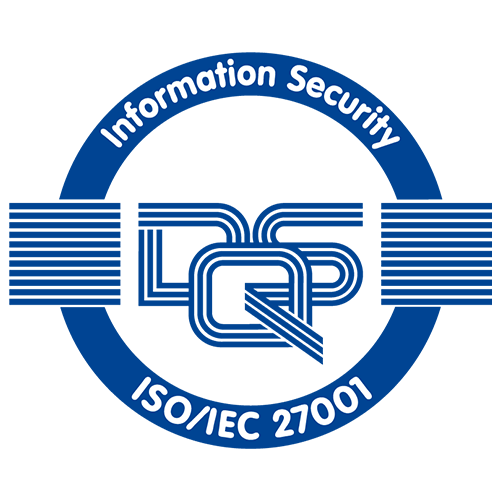Digital transformation is about the integration of technology into different business areas to fundamentally alter how organizations operate and deliver value to customers. Implementing digital transformation helps organizations capitalize on the opportunities presented by the digital world. Simply put, digital transformation makes businesses future-proof.
The digital transformation market is expected to grow dramatically and businesses across sectors are expected to spend close to USD 3.3 trillion in the pursuit of digital transformation by 2025. The pandemic is said to have accelerated the movement, with the global spending on digital transformation technologies estimated to have grown by 10% in 2020.
In this article, let’s talk more about digital transformation and discuss how it works.
Importance of digital transformation. 
Here are a few reasons why adopting digital transformation could be beneficial for enterprises.
- Customer experience is at the heart of digital transformation. A majority of business leaders adopt sophisticated digital transformation strategies to improve their customer experiences.
- Digital transformation helps deliver data-based insights. It enables enhanced data processing, analytics, and reporting, thus resulting in calculated decision-making. Businesses can easily track metrics and analyze data. The resulting data-driven insights can help understand customers better to rethink business strategies, enabling a higher return on investment.
- It opens up avenues to improve collaboration across departments.
- Digital transformation improves agility and innovation in the enterprise.
- Digital transformation can improve efficiency by upgrading legacy systems that handicap efficient business operations.
- It helps reduce costs by optimizing business processes and automating recurring tasks. This helps improve financial outcomes and also improves market perception and positions the company as a visionary enterprise.
How does digital transformation work? 
For digital transformation to work, it requires a full spectrum of integrated skills addressing –
Digital onboarding provides a fast and efficient way of onboarding both retail and institutional clients. Using digital onboarding, financial services companies and forex trading houses can:
- Innovation
- Human-centric design
- Digital technology
- Overall leadership
- Risk
All of these areas need to be tackled in strategic, creative, and adaptive ways to create a holistic approach. The process of digital transformation has generally been thought to have a dual focus.
Tools and processes
Identifying the right tools, processes, and methods that will replace existing solutions is usually seen as the first step.
For example, you might want to improve collaboration in your business process. After identifying the problem, you need to figure out the tools and software solutions that can help you tackle the problem digitally. This is the first step in digital transformation.
Digital culture
The second step is to transform the attitude and way of working of employees to facilitate the adoption of digital culture.
Digital culture is built on digital tools and methodologies. A digital culture enables agile methodologies so the organizations can fail fast and iterate often. Traditional business processes are often slower and reactive. It can be hard to shift people’s attitudes and ingrained habits and behaviors. So, transforming the culture could be the hardest part of digital transformation for businesses.
Key considerations while adopting digital transformation 
Digital transformation begins by focusing on the following key considerations.
-
Technology as a means not an end.
For every business, human behavior is the fundamental economic driver. While adopting digital transformation, organizations should identify which behaviors can create the best return and assemble digital resources to enable that behavioral change. The focus should be on helping humans perform, not on adopting technology.
-
Finding new opportunities.
Ideas alone aren’t sufficient. Businesses should seek the opportunities that emerge at unexplored links between varied disciplines and domains that span markets and geographies that emerge as processes digitize.
-
Releasing minimum viable products.
In a quickly moving market, it’s essential to quickly deliver a minimum viable product/offering and get feedback on it. Success then depends on rapidly delivering offerings and improving with subsequent iterations.
-
Delivering economic value.
Organizations should focus on generating significant economic value for the customers to deliver a positive impact.
-
Offering a competitive advantage.
Digital transformation should demonstrate a clear, defensible, and sustainable competitive advantage in the market.
-
Delivering an excellent customer experience.
The focus should be on creating innovative new digital offerings that fulfill the unmet needs of the customers while delivering a delightful customer experience.
Executing digital transformation 
Digital transformation can be achieved by iteratively taking the following steps
-
Define
The first step is to get the focus right. This step is about quickly setting goals and visions and creating a roadmap for success to achieve them. The roadmap needs to be aligned with current trends and customer needs. It has three further aspects
- Understand the trends and figure out new opportunities.
- Test aspirations and analyze the potential value of initiatives.
- Choose options that enable clients to achieve their futuristic goals.
-
Design
The next step is to focus on the blueprint to deliver value. In this step, you need to develop a deeper understanding of customer needs and behaviors to design solutions for. You need to come up with tangible ideas that can be tested in the market through minimum viable products. It has three further aspects.
- Understand user needs to uncover concerns, motivations, and drivers.
- Combine technical capabilities and user insights to generate well-balanced concepts capable of being launched in the market.
- Continuously iterate and test multiple minimum viable products to de-risk the portfolio.
-
Deliver
The final step is about growth. This step builds an integrated delivery mechanism. Lasting success demands continuous evolution of the minimum viable offering to greater maturity. It has three further aspects.
- Iterate and improve the minimum viable offering/product based on the feedback received from early adopters.
- Scale the product to support maturing market needs.
- Improve operational pillars to support lasting success.
By adopting digital transformation, organizations can be more aligned with their customer demands and be resilient in the fast-moving digital world. But end-to Digital transformation can be a huge step.
For more insights on digital transformation, especially in the context of financial services companies, drop by FYNXT.


